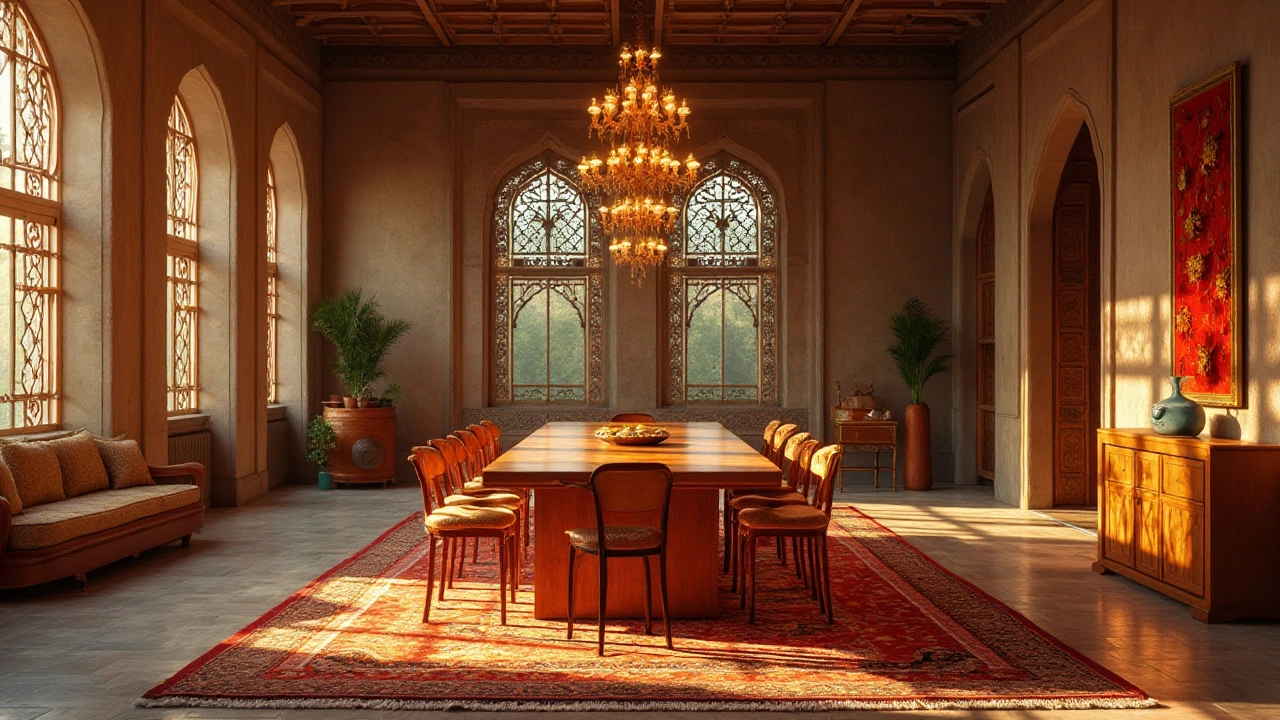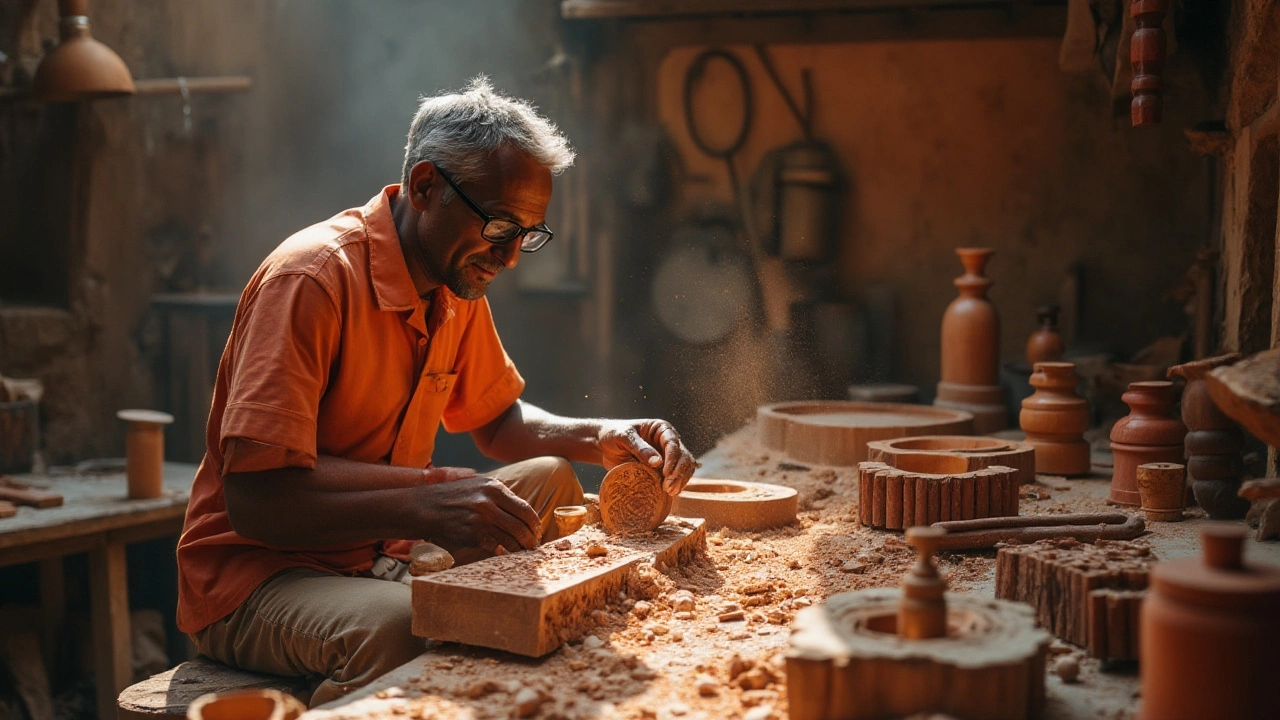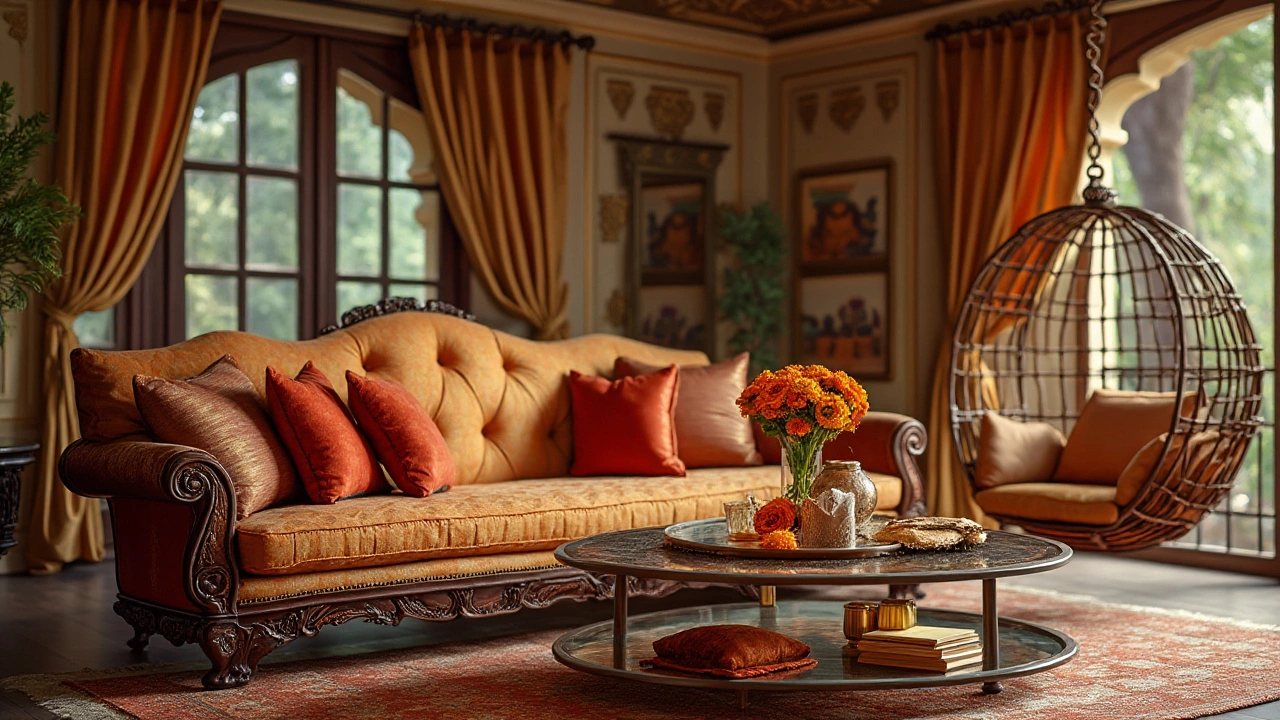Top High-End Furniture Manufacturers in India for 2025

The world of high-end furniture in India is a treasure trove of creativity, craftsmanship, and cultural richness. For those on the hunt for pieces that are both luxurious and reflective of India's unique artistry, the journey to find the perfect fit can be as rewarding as the end result. India's furniture industry has come a long way from traditional methods to embracing modern technologies and design aesthetics.
In today's market, several names stand out for their dedication to creating furniture that transcends functionality and becomes a statement of style. These creators not only offer something extraordinary but they have also woven storytelling into the very fabric of their pieces. Their works often draw from India's opulent history while incorporating contemporary elements, making each piece a unique blend of past and present. Whether it’s the choice of exotic woods or innovative design practices, these artisans push the boundaries of furniture making in inspiring ways.
- The Rich Legacy of Indian Furniture
- Leading Luxury Furniture Makers
- Innovative Design Trends
- Craftsmanship and Material Choices
- Selecting the Right Pieces for Your Space
The Rich Legacy of Indian Furniture
Stepping into the world of Indian furniture is like embarking on a journey through time, where each piece tells a story of craft and culture blended seamlessly. The legacy of Indian furniture dates back centuries, deeply rooted in the traditions of numerous dynasties and regions across the vast subcontinent. From the expressive carvings of Rajasthan to the inlaid detailing of Mysore, the diversity of styles is both fascinating and extensive. This rich tradition has been defined by an unwavering commitment to quality, where artisans have passed down their skills through generations. The use of solid woods like teak and rosewood has been a hallmark, with each piece often created by hands that have perfected their art over decades.
Indian luxury furniture isn't just about aesthetics; it's about the exploration of an identity intertwined with history. The artisans take inspiration from myriad sources, including Mughal influences with their intricate latticework, and the colonial era's fusion of local and Victorian tastes. Then there are the distinct regional techniques, like the famous Sheesham woodwork from Punjab and the lacquered jaw-dropping colors of Gujarat. Such pieces are not only functional but embody a cultural dialogue, making them a coveted acquisition for collectors and homeowners who appreciate the finer things in life.
The craftsmanship in Indian furniture reflects not just skill but a rich tapestry of storytelling. Even in today's competitive global market, the allure of Indian high-end furniture remains strong, captivating those who seek value that transcends mere utility. This was eloquently captured by the renowned art historian Ananda Coomaraswamy, who said, “The hand is the cutting edge of the mind.”
"Furniture in India is not just an object of utility; it is a tableau of artistry, narrative, and cultural celebration," Coomaraswamy once reflected during a discourse on Indian artistry.The truth of these words is evident in how these creations continue to hold relevance and inspire modern designers to incorporate traditional designs into contemporary homes.
The global popularity of Indian furniture also owes much to its adaptability to modern sensibilities without losing its identity. Indian craftspeople have embraced contemporary designs, making tweaks and improvements to traditional patterns so they can fit seamlessly into homes around the world. Whether it's a luxurious carved wooden bed that stands as a bedroom centerpiece or a sleek teak armchair that offers comfort and style, Indian furniture continues to hold its charm. The inventory of high-end furniture available today showcases a remarkable ability to merge classic stylings with the demands of modern living, proving that the story of Indian furniture is not just one of heritage but ongoing innovation as well.
Leading Luxury Furniture Makers
The landscape of high-end furniture in India boasts a vibrant array of artisans and designers who transform raw materials into stunning pieces of art. Among these, several luxury furniture manufacturers stand out for their commitment to quality and innovation. Renowned names like Godrej Interio, Magppie, and Sunil Sethi Design Alliance are just a few of the champions who have captivated consumers with their masterful creations. Not only do these companies provide exquisite luxury furniture, but they also pay homage to India's rich cultural heritage by incorporating traditional motifs and techniques into their work.
Godrej Interio, an arm of the prestigious Godrej Group, is widely recognized for its remarkable ability to blend contemporary aesthetics with functionality. Their collections encompass everything from plush sofas to elegantly designed wardrobes, crafted using sustainable practices. This aligns with the growing global trend towards eco-friendly manufacturing, a practice that has been deeply ingrained in India's artisan communities for centuries. Godrej's approach has made luxury accessible to many, proving that high-end does not have to mean unattainable.
Another trailblazer is Magppie, which has carved a niche in the industry with its focus on modern, minimalist designs. Formerly known for kitchen accessories, Magppie has expanded into the realm of luxury-home products, offering pieces that epitomize sleekness and sophistication. Their designs often feature metallic elements and are celebrated for their understated elegance and unique finishes. In a quote from an interview with Magppie's founder, it was stated that "every piece is designed with a global citizen in mind, melding different world influences into something that feels both fresh and timeless."
The Sunil Sethi Design Alliance offers yet another perspective on luxury furniture, combining traditional craftsmanship with avant-garde designs. Known for collaborations with other designers and artists, Sunil Sethi has introduced collections that push the boundaries of conventional furniture design. Their pieces often explore new forms, incorporating materials like reclaimed wood, marble, and even traditional textiles into their constructions. This bold approach not only honors the past but also looks ahead to the future of Indian furniture design, ensuring that every piece tells a story.
Understanding the meticulous attention to detail employed by these creators offers insights into how Indian furniture makers have transcended mere functionality. It's a testament to their ability to create pieces that are timeless yet speak to the current aesthetic sensibilities. When choosing luxury furniture from India, customers aren't just investing in decor; they're acquiring a piece of artistry that embodies a history of skill, patient craftsmanship, and a forward-looking approach. For those who appreciate furniture as an art form, these manufacturers provide an avenue to explore new dimensions of style and cultural expression.
For those keeping track of India's position in the global furniture market, consider that approximately 15% of Indian furniture exports are classified as 'luxury', a figure that continues to rise each year. This statistic speaks volumes about the growing appreciation for Indian craftsmanship on the world stage and the increasing demand for products that exemplify both beauty and quality. As India continues to produce exceptional bespoke furniture, the legacy of its artisans will undoubtedly leave an everlasting imprint on the global furniture industry.

Innovative Design Trends
In the vibrant world of high-end furniture in India, innovative design trends are constantly evolving, reflecting both global influences and deeply-rooted cultural elements. As we embrace 2025, the fusion of traditional craftsmanship with modern design aesthetics has taken center stage, offering truly unique and stylish pieces. Artisans are skillfully blending rich Indian traditions with contemporary lines, resulting in furniture that tells stories and sparks conversations. This journey of design innovation has seen a remarkable shift towards sustainability, as more manufacturers are adopting eco-friendly materials and practices. The use of reclaimed woods, recycled metals, and low-impact dyes is not only reducing the carbon footprint but also adding value and character to each piece.
The international architect Soumitra Dutta once said, 'A piece of furniture is more than just a place to sit or store; it’s a statement, a reflection of who you are,' which resonates particularly well in India's evolving furniture narrative.
Technology also plays a significant role in the design process today. Advanced software is being utilized to conceptualize, design, and even manufacture intricate patterns that were once impossible by hand. Computer-aided design (CAD) and 3D printing are no longer alien to the Indian furniture makers, allowing them to produce prototypes with precision and speed. These technologies couple creativity with practicality, providing designers with limitless possibilities to experiment and innovate. Another trend sweeping the scene is the customization of furniture. Consumers now have the freedom to co-create their pieces, selecting materials, colors, and styles that best suit their personal tastes and living spaces. The bespoke furniture trend is gaining momentum as more individuals seek pieces that reflect their personal stories and preferences.
Naturistic themes have also heavily influenced current design trends. From embracing earthy textures and tones to incorporating plants and natural fibers into the very structure of the furniture, these elements bring the outdoors inside, creating serene and soothing environments. Manufacturers are also exploring bold, eye-catching styles with striking color palettes, unexpected material combinations, and unconventional shapes. The playful mix of angular metal frameworks with plush fabrics or sleek glass tops on rustic wooden bases challenges traditional design norms and adds a contemporary touch to classic Indian designs.
| Trend | Description |
|---|---|
| Sustainability | Eco-friendly materials and recycling processes. |
| Technology Integration | Use of CAD and 3D printing for precision design. |
| Bespoke Furniture | Customization options for personalized designs. |
| Naturistic Themes | Incorporation of natural elements into designs. |
| Bold Styles | Mix of contemporary and traditional elements. |
In summary, the high-end furniture industry in India is becoming a melting pot of creativity, tradition, and technology. High-quality, bespoke furniture is not only transforming the décor landscape but is also redefining what luxury and sustainability mean in the modern age. This evolution is led by visionary designers and artisans who continue to push the boundaries, ensuring that the furniture they produce is not just functional, but also a work of art that enhances any space it occupies.
Craftsmanship and Material Choices
When it comes to high-end furniture in India, craftsmanship and material choices are pivotal elements that define the quality and uniqueness of each piece. Indian furniture makers often rely on traditional techniques passed down through generations, ensuring that each item is not only beautiful but also built to last. Craftsmen use a variety of tools, some of which have been in use for centuries, to delicately carve intricate patterns and details that are a hallmark of Indian furniture artistry. This level of detail and dedication is what often transforms a simple piece of wood into a work of art.
The selection of materials is equally important. Rich woods like teak, rosewood, and mahogany are commonly employed due to their durability and stunning natural finishes, making them favorites among artisans. Teak, known for its resistance to pests and changing weather conditions, is prized for both indoor and outdoor luxury pieces. Rosewood and mahogany are celebrated for their beautiful grain patterns and rich hues, which often add a touch of elegance and sophistication to any space. High-end furniture makers in India do not just limit themselves to wood; materials such as metals, glass, and even gemstones are used to create one-of-a-kind designs that captivate the senses.
Another defining feature of Indian luxury furniture is the fusion of traditional craftsmanship with modern design sensibilities. Many manufacturers are now adopting sustainable practices, choosing eco-friendly materials and non-toxic finishes to cater to a more environmentally conscious clientele. This approach not only reflects a growing trend in the industry but also enhances the appeal of Indian high-end furniture on the global stage. As the market evolves, many artisans are integrating technology, like CNC machines, to complement handcrafting techniques, ensuring precision without losing the personal touch.
"In the realm of luxury furniture, the material is the canvas and craftsmanship the artist," said Anjali Patil, a renowned interior designer. "The depth of skill seen in Indian furniture offers an unparalleled narrative of tradition and innovation."
The expertise of Indian furniture makers is often showcased in the subtle details and flawless execution seen in finished products. They create items that are conversations starters, and often work closely with customers to personalize designs that fit specific tastes and needs. This bespoke service is not only a testament to their skill but also their dedication to pushing design boundaries while maintaining the high standards associated with luxury furniture. Whether you are investing in a graceful chaise longue or a stately cabinet, the craftsmanship and material choices are what truly make these pieces stand out.

Selecting the Right Pieces for Your Space
Choosing the right pieces for your living space requires a blend of intuition, taste, and a keen eye for design. When you step into a room, the furniture not only fills the space but also determines its mood and functionality. Central to this is understanding the dynamics of the area you seek to transform, and this begins with an honest assessment of its size, lighting, and intended use. A smaller room, such as an intimate reading nook, might benefit from a couple of compact yet stylish chairs from India's renowned furniture makers. Meanwhile, an expansive living room begs for more substantial pieces, like a grand sofa or intricately carved coffee table that act as focal points.
The renowned high-end furniture artisans of India often emphasize the significance of proportion and balance. A rule of thumb for achieving this is considering pieces that neither overpower nor underwhelm the room. Picture spaces as canvases; your furniture is the paintbrush. Embrace the symphony of different textures and materials. Mixing materials like wood, metal, and textiles can inject sophistication into the environment. Legendary artisan Ramesh Malhotra once said, "A room should never allow the eye to settle in one place. It should smile at you and create fantasy." This philosophy insists on the artistry of creating depth through variations in your furniture choices, ensuring no corner lacks intrigue.
Exploration of varying styles is key. With the vast array of options offered by top Indian furniture makers, from traditional to contemporary, there's scope to inject personal flair. A balanced fusion of modern design trends with classic elements often yields spaces that are both unique and reflective of one’s personality. Consider going bold with a luxury statement piece – perhaps a sculptural chair or an antique chest that anchors the room. Such items can spark conversation and admiration. The personal joy derived from luxury furniture often lies not merely in function, but in the narrative each piece tells.
Practicality too plays a pivotal role. High-end luxury furniture India doesn't just look good; it must withstand the realities of everyday life. Scrutinize the quality of craftsmanship. A well-made piece should exhibit masterful joinery, impeccable finishing, and high-quality materials, which are hallmarks of artisans like those in Jodhpur. Investing in such pieces ensures longevity, making them family heirlooms in waiting. Look for furniture that offers smart functionality—a bed with integrated storage or a dining table that extends for gatherings—such insights cater to diverse lifestyle needs.
Moreover, consider the ecological footprint. As awareness of sustainability rises, many Indian furniture makers have shifted towards environmentally responsible practices. Investing in eco-friendly furniture not only benefits the planet but adds a moral dimension to your space. Seek out brands that utilize sustainable resources and non-toxic finishes. Such choices reflect a socially conscious lifestyle and resonate with visitors as testament to your values.
Incorporating high-end furniture into your space is both an art and science. It demands an appreciation for quality, style, and the emotions each piece evokes. The perfect ensemble complements the architectural features of your home, creating harmony between space and furnishing. The joy of decorating with exquisite Indian furniture lies in the journey of discovery, experimentation, and, ultimately, finding that seamless fusion that reflects who you are.





